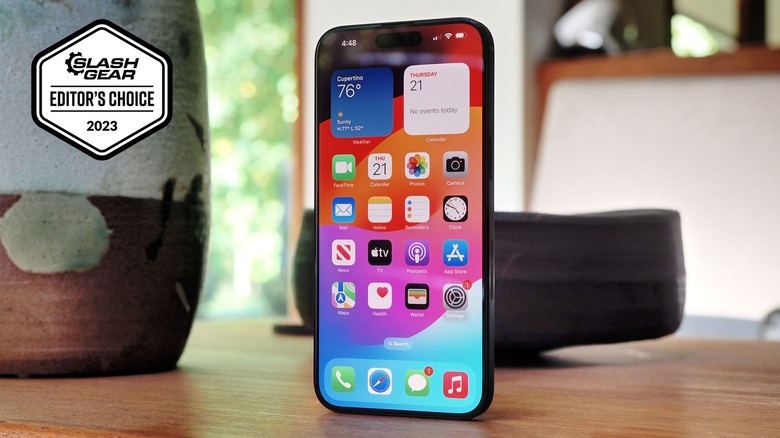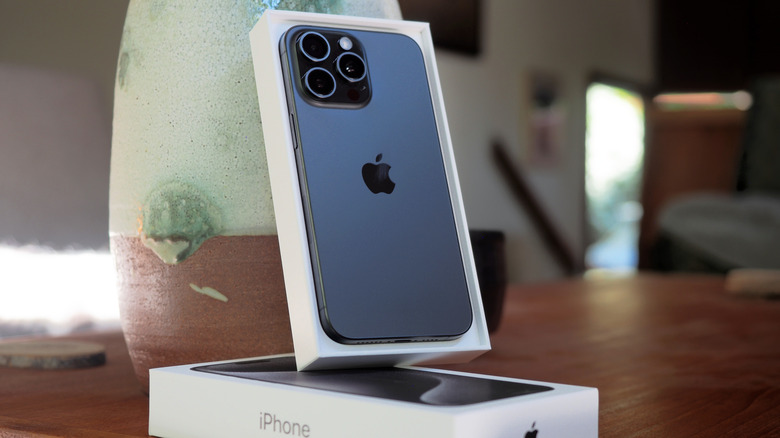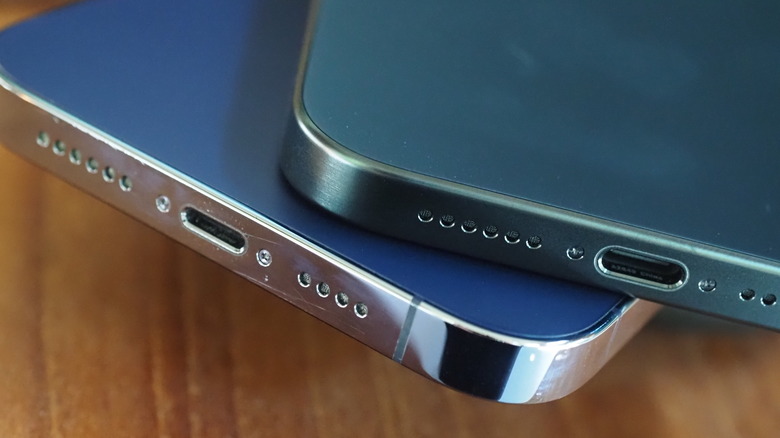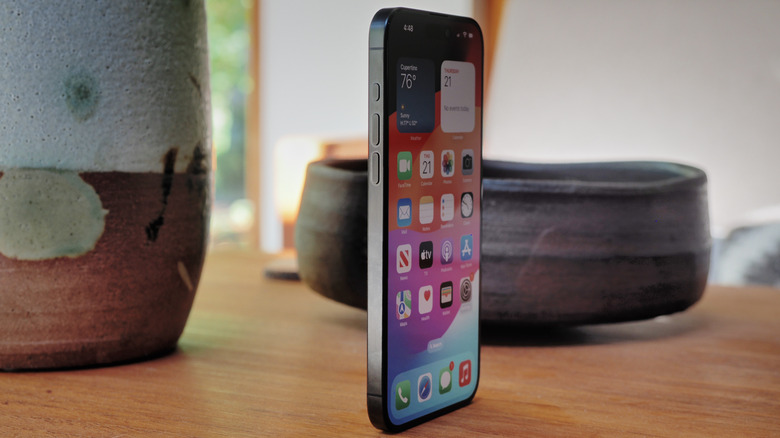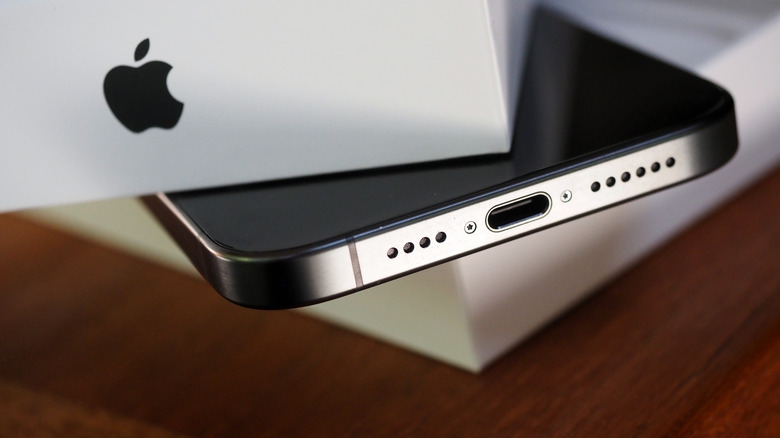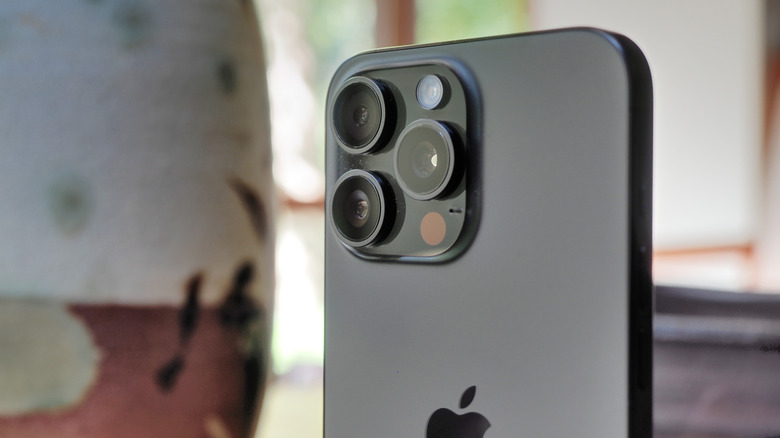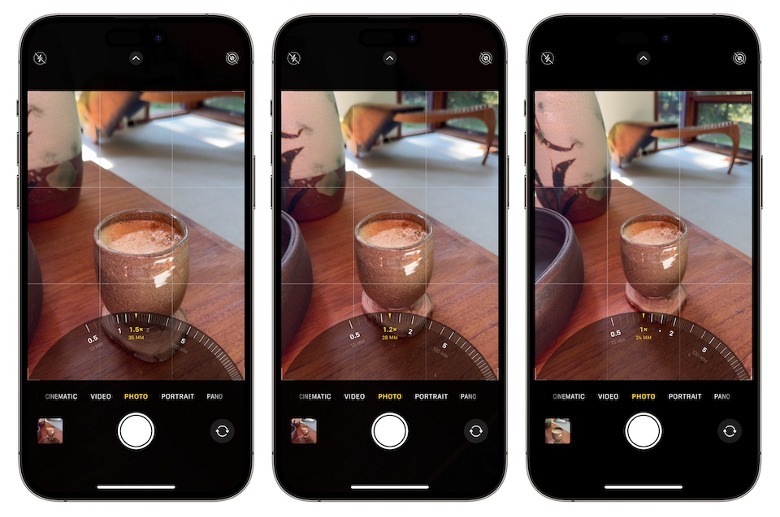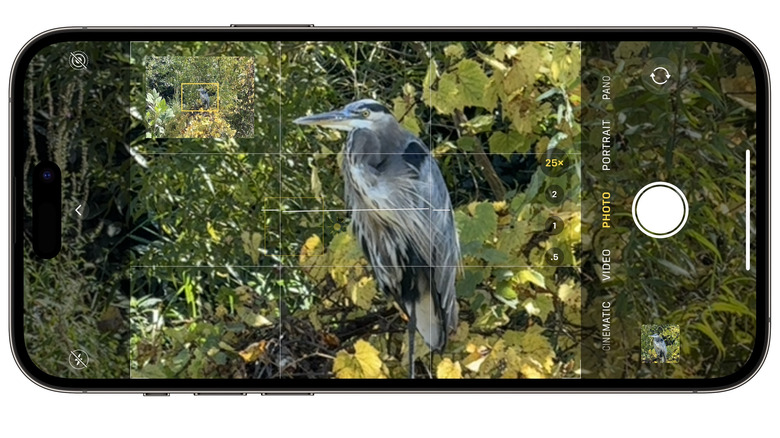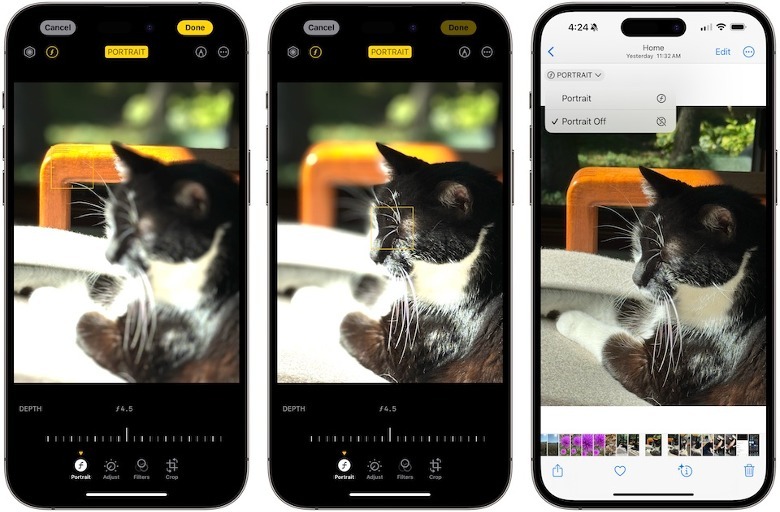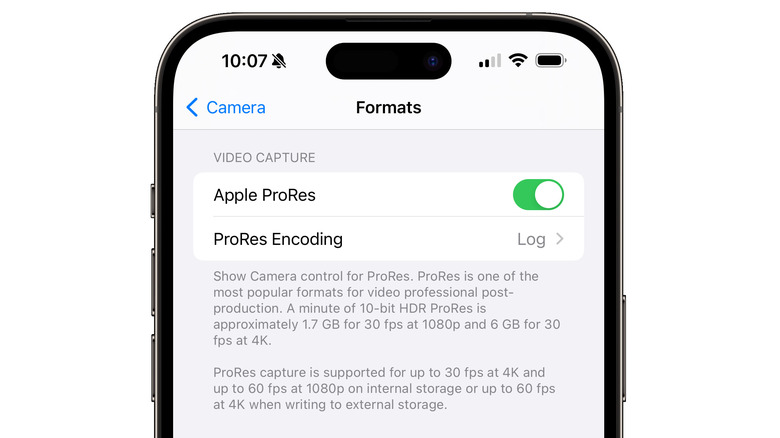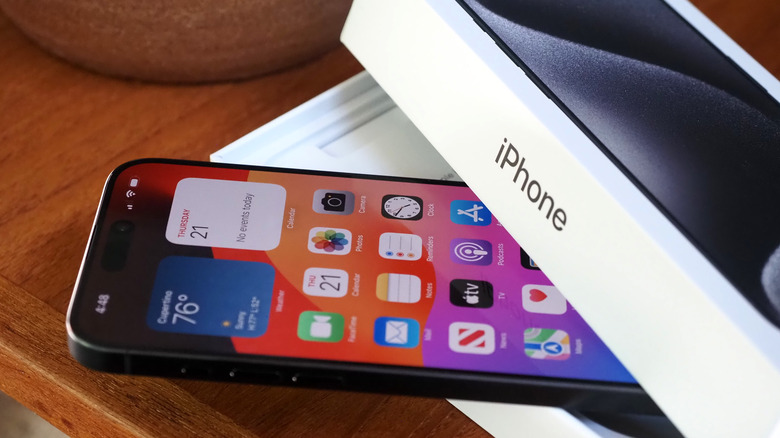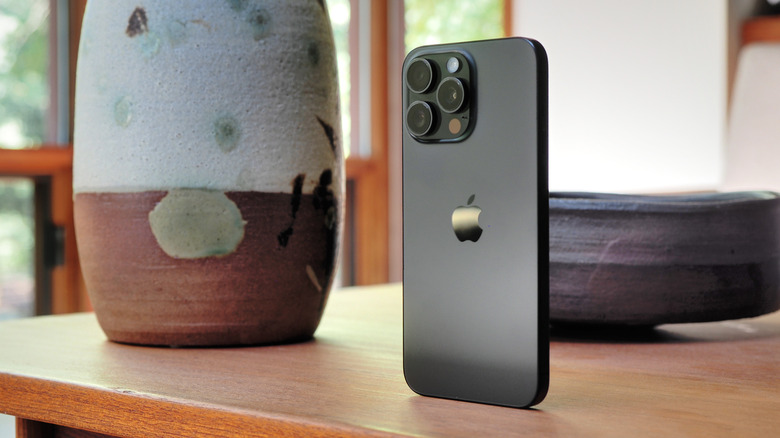iPhone 15 Pro Max Review: Who Should Buy It (And Who Shouldn't)
- Flexible and capable cameras
- USB-C (finally!)
- Lighter and more comfortable to hold
- Very fast
- Very expensive
- Faster USB 3 cable isn't in the box
- Many new features are reserved for true "pros"
There's Apple's world, and then there's everything else, and little exemplifies that division quite like iPhone. Whether you can't imagine upgrading to anything else, or you can't see the appeal amid the polished hyperbole, there's no denying that it's the de-facto benchmark by which all smartphones are judged. And, since the iPhone 15 Pro Max is the most lavish of the new iPhone 15 family, that arguably makes it the benchmark's benchmark.
For long-time iPhone fans, particularly those who might consider themselves the "professionals" that Apple's most expensive models are ostensibly targeted at, the iPhone 15 Pro Max addresses some lingering frustrations. Though the external design may suggest evolution, the highest-priced handset actually represents a relative revolution in things like connectivity and optics.
All the same, you don't need to be an avid smartphone fan to realize that, though several of Apple's headline features may be new-to-iPhone, that doesn't mean they're new-to-the-industry, period. USB-C, clever folded optics in the camera, and other improvements helping justify the iPhone 15 Pro Max's hefty price tag have been seen elsewhere before, all setting the stage for one of Apple's most convincing strategies. You don't have to do it first, you just have to do it best.
Apple provided an iPhone 15 Pro Max for the purposes of this review.
Familiarity and freshness
Life among the flagships gets you Apple's fanciest features, some of which are familiar at this point. For instance, the iPhone 15 Pro Max's 6.7-inch OLED screen runs at the same resolution as last year's model, though it goes brighter and has slightly slimmer bezels. It features the same Dynamic Island, too, hiding the TrueDepth front camera in an animated notifications and status bubble.
It still supports IP68 dust and water resistance, 5G (in sub-6 and mmWave flavors), and Bluetooth 5.3. New for 2023 is a second-generation Ultra Wideband chip that boasts more range and brings AirTags-style directional pinpointing to Find My Friends (just as long as said friends have also bought an iPhone 15 series phone). An embedded Thread radio will, once it's activated later on, allow the iPhone 15 Pro max to connect directly to a Thread smart home router.
Apple's satellite system — which allows the iPhone 15 Pro Max to communicate, sluggishly but potentially life-savingly, via satellites when out of carrier range and assuming a clear line of sight to the sky – is also present, with two years of Emergency SOS service out of the box. For 2023, there's also Roadside Assistance via satellite, summoning AAA to your broken-down vehicle. It'll be covered by AAA membership, while non-members will get a rundown of the costs involved before help is dispatched.
iPhone ownership has never been cheap, but the iPhone 15 Pro Max nudges Apple's smartphone into even more expensive territory. For 2023, it kicks off at $1,199 — $100 more than the starting price of last year's iPhone 14 Pro Max — though that's in part because Apple has done away with the 128GB configuration. Now, you get 256GB of storage as a minimum, or up to 1TB for a heady $1,599.
It's all in the hand
Part of your spend goes on fancy titanium, from which the iPhone 15 Pro Max's band is made. It's given a brushed finish, versus last year's mirror polishing, along with Ceramic Shield front glass. The result looks great, but there's also a welcome softening of the sharp edges which, though it left the previous-generation iPhone feeling crisp, could be uncomfortable to hold for extended periods.
Apple is leaning into the whole "titanium is what they make spacecraft out of" angle — perhaps titanium golf club heads aren't considered quite as exciting — but the important part is weight, or its absence. The dip of 19 grams from the iPhone 14 Pro Max to this 221-gram iPhone 15 Pro Max may not sound like much, on paper, but combined with the slightly softer contour edges it makes a considerable difference in the hand.
Sadly, the brighter finishes that Apple offered in its flagship smartphone last year have been retired. You can have the iPhone 15 Pro Max in Natural, Blue, White, or Black Titanium; all handsome, but all fairly sober too. There's no standout color like the iPhone 14 Pro's Deep Purple, or Sierra Blue the year before. Here's hoping for a mid-cycle shakeup there.
Farewell mute switch; hello Action button
Also absent is the ringer mute switch, which had been an iPhone mainstay from the original design. If, like many of us, you set that to silent on day one and then only ever used it as a fidget spinner stand-in from that point on, you're probably going to love the change to the new Action button.
As the name suggests — and as we've seen on select Android phones over the years — it's a dedicated, configurable button. If you really want a quick toggle between the ringer and silent mode, you can set it to that. Or, it can be set to load the camera (and take a photo with a subsequent press), or turn on the flashlight, capture a voice memo for as long as you hold the button down, or trigger various accessibility features, among other settings. Later in 2023, it'll also offer live conversation translations as an option, too.
What distinguishes Apple's button from the customizable keys of rivals is Shortcuts. Effectively a macro-creator for iOS, a Shortcut can be as simple as loading a third-party app, or as complex as triggering specific actions in those apps, controlling smart home devices, and more. You could have one press of the Action button close your motorized shades and turn off the home lights, open your garage door, and switch on your Tesla, for instance, if you're willing to spend a little time getting to grips with Shortcuts.
USB-C has hidden benefits
The theme of hidden power continues with the USB-C port. Yes, Apple's switch away from Lightning feels long overdue; yes, it leaves plenty of people with Lightning cables and accessories that they have to replace. Pro-series buyers will, arguably, be more familiar with that process given the Mac's transition to USB-C.
Replacing your cables stash is tedious, particularly if you want fancy braided ones like Apple includes. More galling is the fact that the bundled cable tops out at USB 2 data speeds: if you want to tap the full, 10 GB/s rates of USB 3 that the Pro's port supports, you'll need to buy an optional cable. That seems miserly when you're spending four-figures on a new smartphone, but at least you can use any USB 3-compliant cable rather than having to spend $69 on the official Apple Thunderbolt 4 cable.
USB-C has more advantages than you might think at first glance, though how useful they are will depend on how you use your iPhone. Transferring larger files, like ProRAW and ProRES photos and video, from smartphone to Mac is an obvious beneficiary; the ability to connect USB-C drives and access them as external storage is another. With the USB-C Digital AV Multiport Adapter, you can even use the iPhone 15 Pro Max's USB port as an output for 4K60 HDR video.
Clearly, if you're weaving Apple's new flagship into a digital media setup, that could all be just grand. For the rest of us, the fact that the iPhone 15 Pro Max's USB-C can push out up to 4.5W of power to charge small devices (like AirPods Pro with the USB-C charging case, or an Apple Watch with the correct charger) makes it a slow-but-handy fix to sudden low battery warnings.
Big camera changes behind the trio of lenses
While it may look much the same from the outside, the iPhone 15 Pro Max's camera setup has seen some of Apple's biggest changes for this generation. As before, there are dedicated wide, ultra-wide, and telephoto lenses on the back, but their specifications — and how they can be used — have evolved considerably. Unlike in recent years, too, the camera specifications also help differentiate between Apple's two Pro-branded models.
The main camera now shoots at up to 48-megapixels (in HEIF or ProRAW format), with 24-megapixels the default and 12-megapixels an option. Apple now distinguishes between three focal length equivalents — 24mm, 28mm, and 35mm — mimicking three popular prime lens types. Or, you can hit the 2x zoom button (or just drag your finger around the zoom wheel to it) and the quad-pixel sensor uses cropping to get the equivalent of an optical 12-megapixel 2x zoom.
The focal length differences are relatively subtle, but the easy switching — and the fact that you can set the camera to default to any of the three — is a nod to the pro-level users that the iPhone 15 Pro Max is named for.
You can't argue with the results, either: daylight shots are bright, detail-rich, and support plentiful post-capture zooming-in without losing texture. Low light shots tap the updated Photonic Engine, surfing the fine line between pulling out detail without leaving the scene feel unnaturally brightened.
An exclusive telephoto for the biggest iPhone
Then there's the new telephoto lens, a 5x optical zoom that's currently exclusive to the iPhone 15 Pro Max. Basically, Apple squeezes the glass lens in sideways — it calls it a "tetraprism" — and it means you get a 120mm focal length combined with 3D sensor-shift optical image stabilization, and autofocus stabilization in all three directions, with light hitting a larger 12-megapixel sensor than before.
Compared to the 3x optical zoom on the iPhone 15 Pro, which misses out on the tetraprism tech, you get noticeably — and usefully — closer with the Max's 5x telephoto. Combining the main and telephoto cameras, meanwhile, Apple promises an optical equivalent of 10x, too; keep sliding your finger, and there up to 25x digital zoom, though as always you sacrifice detail the more the pixels are enlarged. A handy long-range zoom guide (showing whereabouts in the overall frame that you're aiming the enlarged portion) now pops up when you go 8x magnification or above.
Macro mode can be jumpy
Finally, there's the 12-megapixel ultra-wide sensor. As before, it has a flexible 120-degree field of view, to fit as much as possible into the frame. For the iPhone 15 Pro series, though, it'll also work as a macro camera, supporting a minimum distance that's as little as 2 cm (less than an inch). There's something unexpectedly addictive about getting up close to flowers, pet whiskers, and other objects.
Macro shots did help flag one lingering annoyance of all these sensors: the native camera app's lack of support for manually locking into just one lens. Instead, iOS switches between them automatically, depending on which is expected to minimize noise and generally get a better shot. Great, aside from when you're trying to shoot very close-up, and the frame keeps jerking side to side as the camera app flips between two adjacent sensors. Certain third-party apps allow you to pick a sensor and stick with it.
A huge improvement to Portraits
Like with the virtual prime lenses, a large part of the iPhone 15 Pro Max's photographic charm is how Apple combines hardware, software, and real-time processing to deliver something arguably far more flexible than a regular DSLR might be. Portraits are perhaps the clearest example of that at work.
Until now, Portrait mode — which relies on depth-sensing and artificial background bokeh — has been a separate mode in the iPhone camera app. With the iPhone 15 Pro series, the lines between portraits and regular photos are (excuse the pun) blurred.
If the standard photo mode spots you're taking a picture with a person, cat, or dog prominent in the frame, it'll automatically capture depth information, too. An "f" icon appears, and tapping it switches automatically to Portrait mode. Or, you can retroactively enable Portrait mode on photos with an "f" in the camera roll, including adjusting the degree of background blurring. That can be helpful to work around things like whiskers, which iOS' fake bokeh still sometimes struggles with.
Along with that adjustable bokeh, there's also now post-capture focus control. For images with depth data attached, you can tap different areas of the frame to refocus on them (a process reminiscent of Lytro's ill-fated refocusing cameras from the early 2010s). The results are surprisingly good, though you're also working within the limits of the actual focal length of the original image, too. If that has natural background blurring from the lens length itself, you obviously can't artificially crisp that up.
Big video features for a small audience
Nothing quite encapsulates the "Pro" positioning — and the question you have to ask if you're considering this or one of Apple's more affordable models — like the iPhone 15 Pro Max's new video features. As before, there's ProRes support for capturing footage that plays much nicer with the professional editing apps videographers are used to. To that, 2023's flagship adds even more flexibility.
There's now Log encoding in ProRes, for example, alongside the SDR and HDR options. That opens the door to advanced post-processing color grading, making it much easier to blend iPhone footage with that of other cameras. The iPhone 15 Pro Max also has support for ACES, or the Academy Color Encoding System, making it the first smartphone to do so. And, with USB 3 support (and the right cable, of course), that video can be captured directly to an external SSD in up to ProRes 4K60 (as long as your drive supports at least 220MB/s write speeds and can run on the 4.5W that the phone's USB-C supplies.
It's all impressive stuff, but for most people, it's bragging rights they'll never actually take advantage of. If you don't know what LUTs are or have never edited anything more than an Instagram Story, then the iPhone 15 Pro Max's advanced videography will be wasted on you. That's not to say the regular 4K/60 HDR it'll record is a disappointment — far from it, and honestly Apple's phone probably still leads the pack when it comes to smartphone video capture — but more that, the top-end of what's capable now is reserved for a small subset of owners.
Faster, longer-lasting, and more connected
The new Apple A17 Pro chip is responsible for all this clever crunching, with speed improvements across the board in CPU, GPU, and Neural Engine processing. At times you can feel its hard work in unexpected ways, too: the iPhone 15 Pro Max got noticeably toasty in the hand after a photo session, compared to the heat given off from the iPhone 14 Pro Max.
Despite that — and that the extra grunt bodes well for console-level games such as "Resident Evil 4" and "Assassin's Creed Mirage" set to launch on iPhone in the coming months — battery life didn't take an ominous tumble. Apple quotes the usual (fairly nebulous) "all-day" usage from a single charge, but even after full days with plenty of camera and bright-screen browsing, I've been ending up with juice to spare. That's good, since the maximum 27W charging rate still falls well short of what we've seen on Android phones in recent years.
Like last year, there's support for two simultaneously active eSIM — Apple makes the card-free process relatively easy, though the carriers often then screw it up again by making switching SIMs harder than it really needs to be — and eight overall eSIM saved. New, meanwhile, is Wi-Fi 6E support: if you have the right Wi-Fi router, that should mean faster speeds.
Then there's the other "it just works" stuff that helps keep people locked into Apple's ecosystem. MagSafe's flexibility — and iOS 17's Standby feature that turns the iPhone into a little smart display when it's rotated horizontally on a charger or dock — along with the fact that even those not paying for iCloud get three weeks of temporary storage, so they can backup their old iPhone and transfer its data to their new purchase.
iPhone 15 Pro Max Verdict
The iPhone 15 Pro Max is expensive, there's no denying that. What feels notable about this generation of Apple's smartphone, however, is that the distinction in capabilities between the different iPhone price points is far clearer. The gap between the regular iPhone and its Pro counterparts has never felt so broad; doubling down on that, the differences between the iPhone 15 Pro and the iPhone 15 Pro Max mean it's no longer just a matter of deciding "bigger screen or smaller?"
Much in the same way, comparing the iPhone 15 Pro Max's additions to similar features on rival smartphones feels like it misses the point. Have Android handsets from Samsung, Google, and others offered USB-C, carefully folded telephoto lenses, and macro modes? Certainly, but they haven't done so with iOS, within Apple's ecosystem, and with Apple's ambitious mobile chipsets, so — like it or not — for a sizable cohort of people that preexistence doesn't really matter.
Whether the iPhone 15 Pro Max is worth it, then, depends on what use you'll make of its varied capabilities. With the arrival of the Dynamic Island on the iPhone 15 Plus (and a 2x optical-equivalent zoom) you get the same screen scale, not to mention solid photography. Just how much is a faster iPhone, with even more flexible cameras, worth to you? Apple's best smartphone has never been so talented, but its Pro branding is a stark reminder that not everyone needs — or will get the most from — the features that justify its premium price.
